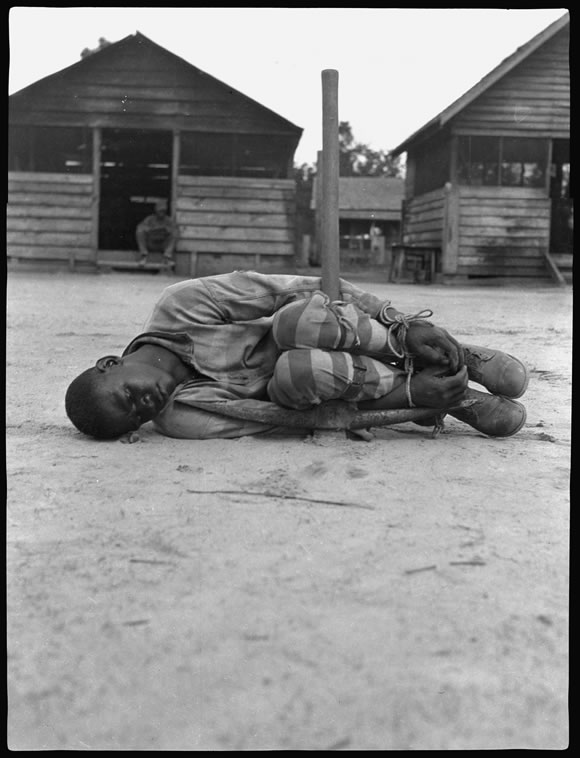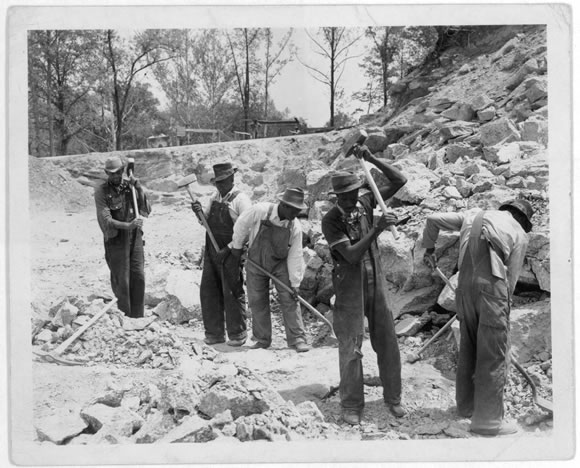Now that I think of it I know just who Woody Strode was.
In grade 11 history class we watched Spartacus, and the only scene that sticks with me today is the one in which the King (can’t remember his name) forces Spartacus to duel to the death against a tall black slave with sculpted muscles. But instead of finishing off Spartacus, the slave rushes at the king and is killed by soldiers.
I remember telling my dad that I never knew Romans had black slaves. And now I remember him telling me that the guy who played the slave was Woody Strode, a football star at UCLA and one of the first black men to play in the NFL.
It’s funny how “facts” can crowd out memories.
If you’d asked me last week which player re-integrated the NFL in 1946 I would have told you it was battering ram running back and Hall-of-Famer Marion Motley.
Would have bet my left pinkie on it.
Would have bet my left pinkie on it.
And right now I’d have nine fingers because, like the link says, Motley and Bill Willis were the first African-American players to join the AAFC, which didn’t merge with the NFL until 1950.
It took Alexander Wolff’s story in the Oct. 12 issue of Sports Illustrated to remind me of what my pops had already taught me:
The Jackie Robinsons of pro football weren’t Motley and Willis, but Strode and Kenny Washington, who signed with the Rams in 1946.

Both men were stars at UCLA, standouts even among other future pros, so why was it that neither could secure and NFL contracts until they had reached their late 20s? What kind of pressure did the African-American news media apply to the Rams’ ownership to force them to do the right thing? And why has Motley’s story supplanted Strode and Washington’s as the accepted narrative of how the NFL’s unofficial color line was broken after 12 years of segregation?
Wolff’s piece answers those questions and more.
Reading it you can only imagine the danger these two pioneers faced as the only two black players in a deadly sport.
And that is the one (small) beef I have with the piece.
Strode and Washington entered the NFL as trailblazers but a previously unpublished interview with Strode reveals they didn’t leave the league feeling like heroes.
"Integrating the NFL was the low point of my life," Strode told SI in an unpublished interview before his death. "There was nothing nice about it. History doesn't know who we are. Kenny was one of the greatest backs in the history of the game, and kids today have no idea who he is…If I have to integrate heaven, I don't want to go."
Strong words, and if I could change anything about the piece I’d include a few more on-field anecdotes detailing the reality that inspired them, the flagrant racism these two men encountered and overcame daily at practices and in games.
We learn about what they put up with in college – from All-America snubs to cheap –shotting opponents – but I’d like to know a little more about what happened in the NFL to push Strode to the stunning conclusion that he’d rather go to hell than integrate heaven.
But again, a nit-picking grievance of a strong story.
Wolff takes a topic that’s been covered relentlessly for a generation and still uncovers something fresh, forcing us all to re-think what we think we know about the integration of big-time pro sports.
If you have the time, it’s worth a read. And if you don’t have the time, find it.
We learn about what they put up with in college – from All-America snubs to cheap –shotting opponents – but I’d like to know a little more about what happened in the NFL to push Strode to the stunning conclusion that he’d rather go to hell than integrate heaven.
But again, a nit-picking grievance of a strong story.
Wolff takes a topic that’s been covered relentlessly for a generation and still uncovers something fresh, forcing us all to re-think what we think we know about the integration of big-time pro sports.
If you have the time, it’s worth a read. And if you don’t have the time, find it.
Part II – Slavery by Another Name
Discovered this one last month in a bookstore at the Tampa Airport, tucked away in the bottom row of paperbacks in the American History section. Like Wolff’s story, it forced me to reconsider my knowledge of a subject about which I’d considered myself an expert.
Photo borrowed from www.slaverybyanothername.com
On one level, the continued existence of slavery in the U.S. shouldn’t surprise a guy like me.
On one level, the continued existence of slavery in the U.S. shouldn’t surprise a guy like me.
I’ve known for a long time that the Emancipation Proclamation didn’t free us all – that slaves in Union states like Maryland kept slaving right until the end of the Civil War.
I also knew the Thirteenth Amendment didn’t ban slavery outright, that bondage is still legal in the U.S. if it’s part of a convict’s sentence. A good friend of mine – mentor, author and thinker Gary Freeman – is one of several very smart people working hard to close the loophole, but still it persists.
In addition to all that many (and I hope most) of us are aware that whites employed numerous techniques – sharecropping, poll taxes, terrorism -- to keep Black citizens in the post-bellum South in a state of near-slavery.
I also knew the Thirteenth Amendment didn’t ban slavery outright, that bondage is still legal in the U.S. if it’s part of a convict’s sentence. A good friend of mine – mentor, author and thinker Gary Freeman – is one of several very smart people working hard to close the loophole, but still it persists.
In addition to all that many (and I hope most) of us are aware that whites employed numerous techniques – sharecropping, poll taxes, terrorism -- to keep Black citizens in the post-bellum South in a state of near-slavery.
Knowing all that it’s not tough to imagine that Southern states, even after the Civil War, would not just condone, but endorse, encourage and profit from Black bondage.
That a network of so-called law enforcers would arrest Black citizens on the flimsiest charges, apply a series of fines, then sell these “convicts” to industrialists and plantation owners, who would pay the fine then force prisoners to work until they had satisfied the debt.
That defined prison terms could morph into endless cycles of debt that bled into lifetimes spent performing soul-sapping, backbreaking, and uncompensated labour.
That a network of so-called law enforcers would arrest Black citizens on the flimsiest charges, apply a series of fines, then sell these “convicts” to industrialists and plantation owners, who would pay the fine then force prisoners to work until they had satisfied the debt.
That defined prison terms could morph into endless cycles of debt that bled into lifetimes spent performing soul-sapping, backbreaking, and uncompensated labour.
All of that is pretty easy to imagine if you’re familiar with the history of the post-reconstruction South. But imagining is one thing – confronting the jarring reality that all these things actually happened is quite another.
And this book will jar you.
Using and meticulous research and in painstaking detail author Douglas Blackmon tells the stories of the men and women on both sides of the system of Neo-slavery that drove much of the South’s economy deep into the 20th century.
He introduces us to John W. Pace, the Alabama plantation owner who purchased black convicts by the dozen and forced them to work on his farm.
And to Warren Reese, the U.S. Attorney who was among the first to prosecute southerners for post-bellum slave trading.
And to Green Cottinham, a black man born free but who died a slave in an Alabama coal mine.
I know this post is starting to read like liner notes, but understand the publisher didn’t put me up to this. Understand, too, that I wouldn’t waste space here if the book didn’t move me.
More precisely, it kicked me in the gut with its brutal and unashamedly honest depiction of genocide for private and public profit, a system that reigned in the south for nearly three generations after the Civil War.
Pick it up if you get the chance. It’s not an easy read, but it’s an enlightening one.
And this book will jar you.
Using and meticulous research and in painstaking detail author Douglas Blackmon tells the stories of the men and women on both sides of the system of Neo-slavery that drove much of the South’s economy deep into the 20th century.
He introduces us to John W. Pace, the Alabama plantation owner who purchased black convicts by the dozen and forced them to work on his farm.
And to Warren Reese, the U.S. Attorney who was among the first to prosecute southerners for post-bellum slave trading.
And to Green Cottinham, a black man born free but who died a slave in an Alabama coal mine.
I know this post is starting to read like liner notes, but understand the publisher didn’t put me up to this. Understand, too, that I wouldn’t waste space here if the book didn’t move me.
More precisely, it kicked me in the gut with its brutal and unashamedly honest depiction of genocide for private and public profit, a system that reigned in the south for nearly three generations after the Civil War.
Pick it up if you get the chance. It’s not an easy read, but it’s an enlightening one.







1 comment:
this needs to be published.. good stuff.. i learned a lot.. wow.. i'll def' be sharing this w/ some friends, cuz i doubt any of the ppl i know in the NFL know this..
Post a Comment